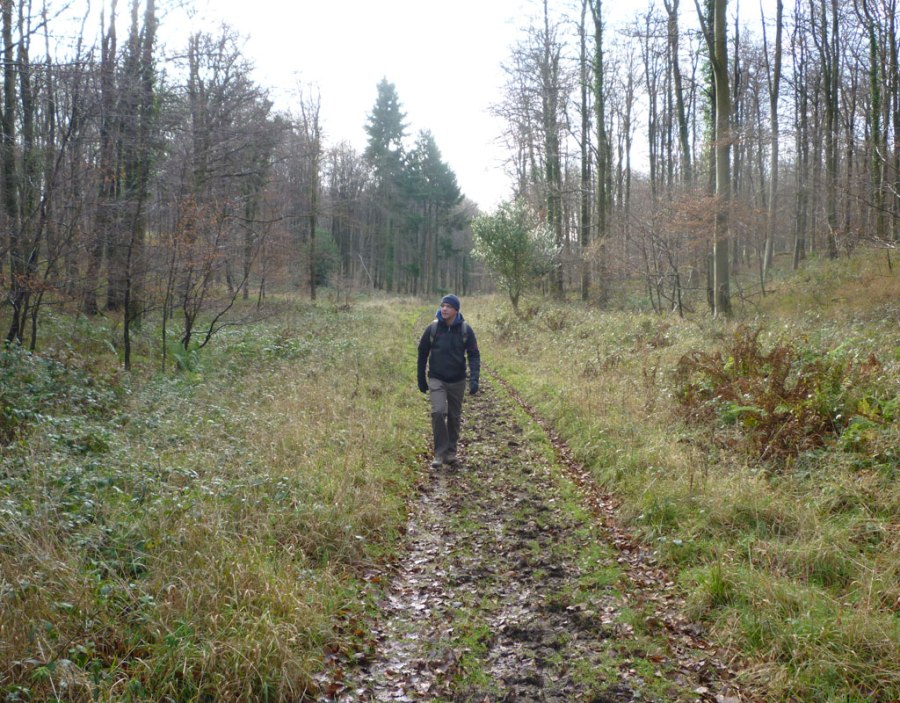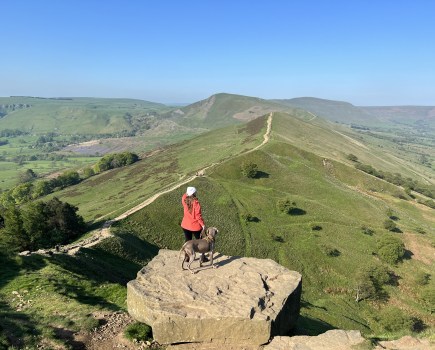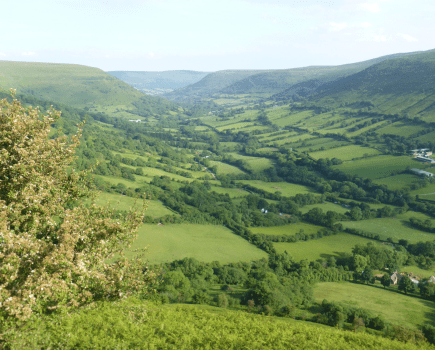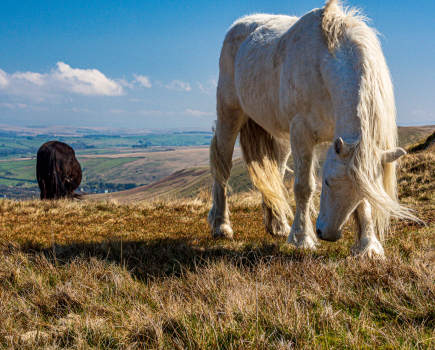Daniel Neilson draws on literature and history as he walks the South Downs
When William Blake wrote his Preface to Milton in 1804, he had no idea that 117 years later the poem would become the hymn Jerusalem. Inspired by his West Sussex home in Felpham, Blake wrote: “And did those feet in ancient time/Walk upon England’s mountains green/And was the holy Lamb of God/On England’s pleasant pastures seen.” Today, West Sussex is still a part of England that makes even hardened city dwellers become misty-eyed with nostalgia. In the villages and hamlets hidden among the lush folds of the South Downs are 17th century coaching inns serving fine ales alongside locally shot game, well-preserved Norman churches and friendly folk with a calm Sussex burr.
Although attracted certainly to the inns, there are hundreds of miles of public footpaths in West Sussex, traversing countryside cluttered with wild flowers, dry stone walling and flint cottages. Although much of the area is grass downland, it is still one of the most heavily wooded counties in England – and it was to these woods we headed on a frosty December morning after a delightful weekend in Chichester. My wife and I headed up on to the ridge of the South Downs; what Rudyard Kipling described as, ‘Our blunt, bow-headed whale-backed Downs’ at Duncton Down between Chichester and Petworth.
Heading west, this is a largely wooded part of the South Downs Way. When we walked it a few years ago we saw deer up here, but today it was silent apart from the terrified croak of pheasant and the occasional crack of a shooting party out to get them. The Weald to the north was often obscured by the trees (it was saving the views for the final climb), but I find this concentrates my mind on the near, offering a different perspective than my usual wondering at the views all around. Robins and chaffinches hopped busily around the bare trees and the racehorses on the stud farms around here were wrapped up against the cold. In the distance I could see the grandstand at Goodwood. The racing lineage is strong here, but it is hunting that this area has been famed for since William III visited Goodwood around the 1700s. Our halfway point was the flint 17th century inn, the delightfully-named Fox Goes Free, one of best country pubs I have been to. It’s the kind of place that offers ‘The Fox Clay Shoot: brunch, shoot & dinner for £55’. After a pint and a sausage sandwich, we headed to the next hamlet of East Dean and then a long climb up to the ridge. Less wooded, the views were now expansive, but the best was as we arrived back onto the South Downs Way. In the late afternoon sun, we could see for miles across the Weald. Midhurst, Petworth, Haslemere. A green and pleasant land indeed.
ROUTE DESCRIPTION
- Head W on footpath out of car park and onto the ridge to meet with the South Downs Way (SDW) Follow SDW through Graffham Down. Turn S at bridleway on GR: SU904162 and follow wide path to the Fox Goes Free at Charlton. Follow lane to East Dean, past road to church and then follow signposted footpath NW at next lane heading N. Follow footpath and turn E on wide track. when track heads N to clearly marked SDW. Cross SDW and back onto path leading down to the car park.
Daniel Neilson draws on literature and history as he walks the South Downs
When William Blake wrote his Preface to Milton in 1804, he had no idea that 117 years later the poem would become the hymn Jerusalem. Inspired by his West Sussex home in Felpham, Blake wrote: “And did those feet in ancient time/Walk upon England’s mountains green/And was the holy Lamb of God/On England’s pleasant pastures seen.” Today, West Sussex is still a part of England that makes even hardened city dwellers become misty-eyed with nostalgia. In the villages and hamlets hidden among the lush folds of the South Downs are 17th century coaching inns serving fine ales alongside locally shot game, well-preserved Norman churches and friendly folk with a calm Sussex burr.
Although attracted certainly to the inns, there are hundreds of miles of public footpaths in West Sussex, traversing countryside cluttered with wild flowers, dry stone walling and flint cottages. Although much of the area is grass downland, it is still one of the most heavily wooded counties in England – and it was to these woods we headed on a frosty December morning after a delightful weekend in Chichester. My wife and I headed up on to the ridge of the South Downs; what Rudyard Kipling described as, ‘Our blunt, bow-headed whale-backed Downs’ at Duncton Down between Chichester and Petworth.
Heading west, this is a largely wooded part of the South Downs Way. When we walked it a few years ago we saw deer up here, but today it was silent apart from the terrified croak of pheasant and the occasional crack of a shooting party out to get them. The Weald to the north was often obscured by the trees (it was saving the views for the final climb), but I find this concentrates my mind on the near, offering a different perspective than my usual wondering at the views all around. Robins and chaffinches hopped busily around the bare trees and the racehorses on the stud farms around here were wrapped up against the cold. In the distance I could see the grandstand at Goodwood. The racing lineage is strong here, but it is hunting that this area has been famed for since William III visited Goodwood around the 1700s. Our halfway point was the flint 17th century inn, the delightfully-named Fox Goes Free, one of best country pubs I have been to. It’s the kind of place that offers ‘The Fox Clay Shoot: brunch, shoot & dinner for £55’. After a pint and a sausage sandwich, we headed to the next hamlet of East Dean and then a long climb up to the ridge. Less wooded, the views were now expansive, but the best was as we arrived back onto the South Downs Way. In the late afternoon sun, we could see for miles across the Weald. Midhurst, Petworth, Haslemere. A green and pleasant land indeed.
ROUTE DESCRIPTION
- Head W on footpath out of car park and onto the ridge to meet with the South Downs Way (SDW) Follow SDW through Graffham Down. Turn S at bridleway on GR: SU904162 and follow wide path to the Fox Goes Free at Charlton. Follow lane to East Dean, past road to church and then follow signposted footpath NW at next lane heading N. Follow footpath and turn E on wide track. when track heads N to clearly marked SDW. Cross SDW and back onto path leading down to the car park.








